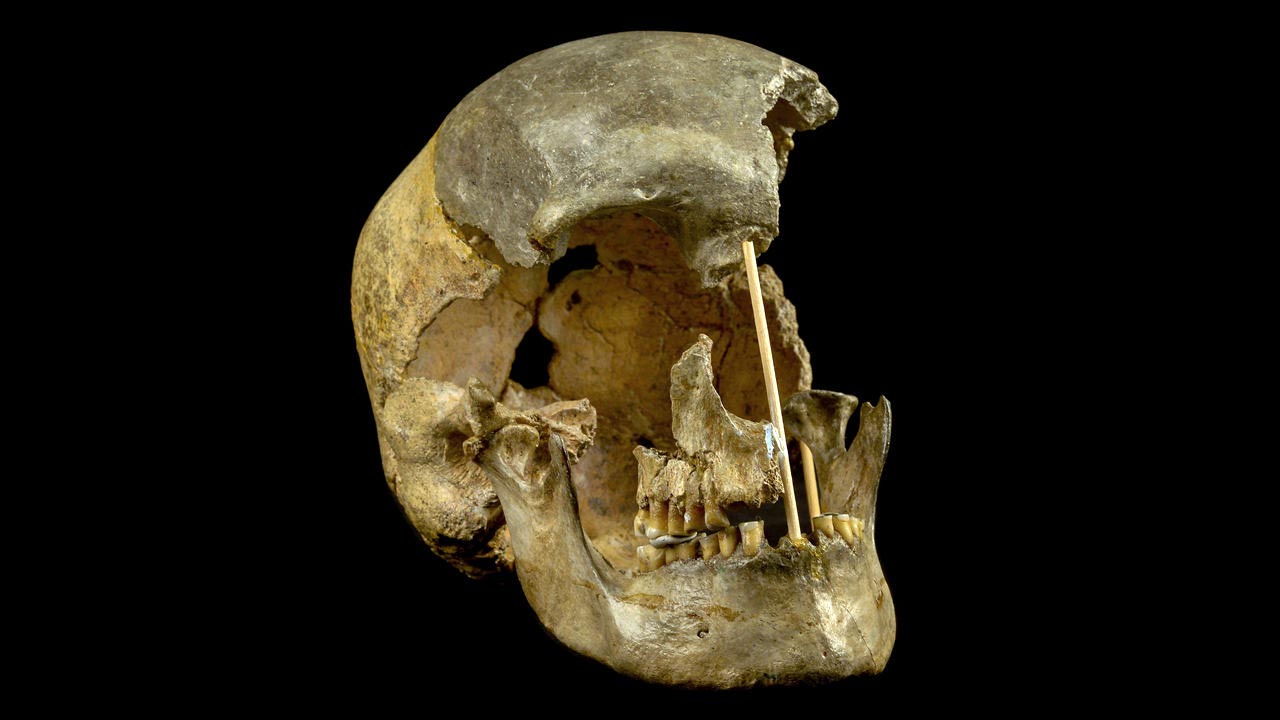
The segments of Neanderthal DNA in its genome were longer than those of the Ust’-Ishim individual from Siberia, the previous oldest modern human sequenced, suggesting modern humans lived in the heart of Europe more than 45,000 years ago.
Lateral view of the mostly-complete skull of Zlatý Kůň.Archaeological data published last year furthermore suggests that modern humans were already present in southeastern Europe 47-43,000 years ago, but due to a scarcity of fairly complete human fossils and the lack of genomic DNA, there is little understanding of who these early human colonists were — or of their relationships to ancient and present-day human groups.
In a new study published in Nature Ecology & Evolution, an international team of researchers reports what is likely the oldest reconstructed modern human genome to date.First discovered in Czechia, the woman known to researchers as Zlatý kůň (golden horse in Czech) displayed longer stretches of Neanderthal DNA than the 45,000-year-old Ust’-Ishim individual from Siberia, the so-far oldest modern human genome.
A recent anthropological study based on the shape of Zlatý kůň’s skull showed similarities with people who lived in Europe before the Last Glacial Maximum — at least 30,000 years ago – but radiocarbon dating produced sporadic results, some as recent as 15,000 years ago.Zlatý kůň carried about the same amount Neanderthal DNA in her genome, as Ust Ishim or other modern humans outside Africa, but the segments with Neanderthal ancestry were on average much longer.
Based on these findings, the team argues that Zlatý kůň represents the oldest human genome to date, roughly the same age as — if not a few hundred years older than — Ust’-Ishim.
Just as with Ust’-Ishim and the so far oldest European skull from Oase 1, Zlatý kůň shows no genetic continuity with modern humans that lived in Europe after 40,000 years ago,” says Johannes Krause, senior author of the study and director at the Max Planck Institute for Evolutionary Anthropology.
Micro-sampling the petrous bone of Zlatý Kůň from the base of the skull in the clean room at the Max Planck Institute for the Science of Human History, Jena.As advances in ancient DNA reveal more about the story of our species, future genetic studies of other early European individuals will help to reconstruct the history and decline of the first modern humans to expand out of Africa and into Eurasia before the formation of modern-day non-African populations.Reference: “A genome sequence from a modern human skull over 45,000 years old from Zlatý kůň in Czechia” by Kay Prüfer, Cosimo Posth, He Yu, Alexander Stoessel, Maria A.